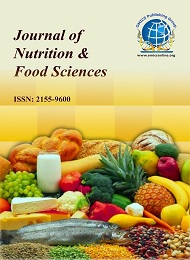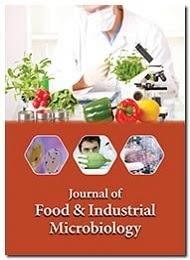We take colossal delight to invite participants from around the globe to join us at International Conference on Food & Beverages schedule to be held on September 09-10, 2019 Singapore. The Conference will primarily emphasize on the various topics related to Food & Beverages, Food Industry, Food Science and Technology etc. It is a world-wide dais that combines different spheres, stimulate the exchange of ideas and enable participants to grasp the latest developments and ideas in different areas of Food.
The Conference contains Keynote Forum, Oral and Poster presentations, Young Research Forum and Exhibitions. The ultimate aim is to gather prominent academic scientists, researchers, specialists, industrialists and research scholars to discussed and share their know-hows and research works on all aspects of Food Science & Beverages Industry.
Conference Series LLC Ltd organizes 3000+Global Events comprises of 600+ Conferences, 1200+ Workshops and 1200+ Symposiums every year in USA, Europe & Asia with support from 1000 more scientific societies. Food & Beverages 2019 Conference targets on the topics such as Food Biotechnology, Food & Eating Disorders, Nutrition and Physiology, Food Allergies, Novel Food Processing Technologies, Food Additives, Food Analysis, Safety and Health, Beverage Technology, Beverage Technology, Food and Beverage Packaging, Sea Food Processing, Dairy Science and Technology, Food Flavouring and Coatings, Food Preservation and Processing, Food Safety and Security, Food Waste Management, Food and Beverage Hotel Management, Fast Food and Obesity, Modern Food Culture and Cultivation etc. and will also discourse the latest trends and development in the field of Food. The conference will gather all such scientist, Noble Laureate, researcher, research scholar, students and people together who are involved in Food and Beverage Industry, Food Technology, Beverage Technology, Sustainable packaging etc.
Target Audience:
-
Food Industrialists
-
Packaging Specialists
-
Food Safety Officers
-
Food Technologist
-
Quality Control Officers
-
Food Microbiologist
-
Quality Assurance Officers
-
Scientists
-
Researchers
-
Biotechnologists and Nanotechnologists
-
Food Engineers
-
Students
Why to attend?
With members from around the world focused on learning about Food & Beverages and its advancement so this is your best opportunity to reach the largest assembly of participants of the Food Technology community. This conference seek to bring all such scientists, Noble Laureates, researchers, research scholars, students and people together who are involved in Food Technology and Packaging field and provide them to discuss about their unique innovation, sharing ideas and interaction with each other. World-renowned speakers, the most recent development and advancement in the field of food technology are the limelight of the conference.
Track 1: Food Biotechnology
This session deals with the use of biotechnology in food production and food processing industry. Biotechnology has a very long history of use in the food industry. For centuries, microbes are been used to manufacture the bread, alcohol through fermentation and dairy products. The food biotechnology industry received the major boost with the advancements in the field of genetic engineering. Genetically Modified Organisms (GMOs) are now used around the world widely. Through genetic engineering methods, the genetic makeup of food composites can be modified to obtain desirable traits. However, it has been met by resistance from several sections of the society and effects on human health.
Track 2: Food & Eating Disorders
Irregularity in the regular diet results in eating disorders. Commonly, there are two types of such disorders –bulimia & anorexia. While bulimia is caused due to overeating and anorexia involves eating too less. These disorders are been affected upon by mental health, with fear of gaining weight resulting in anorexia. Bulimia on the other hand occurs to people who binge eats, mostly junk food. This too has mental implications as the affected individual has no control over themself to prevent overeating. Eating disorders results in poor health due to discrepancies in the diet. Anorexic people are severely under-weight and the overeating causes obesity. Apart from eating disorders, unbalanced components in the diet also leads to cardiovascular diseases and diabetes.
Track 3: Nutrition and Physiology
Nutrients are mainly classified into two types – Micronutrients and Macronutrients. Macronutrients are which are required by the body in higher amounts (carbohydrates, proteins, lipids) while micronutrients are required in lesser amounts (vitamins and minerals). Macronutrients are responsible for energy requirement and structural development. Nutrition physiology is the study of the effect of the nutrients on the body’s metabolism and functions.
Depending on requirement the nutrition can be classified into different types like:
Paediatric Nutrition: Nutrition of children so that they are exposed to all the required nutrients essential for healthy growth.
Maternal Nutrition: Nutrition of mothers while they bear and nurture children
Clinical Nutrition: Nutrition of patients in health care
Sports Nutrition: Nutritional requirements of sportspersons, especially the quantity of food and fluids consumed by athletes to optimize their activity.
Track 4: Food Allergies
An unusual reaction by immune system to certain components of food is called as food allergy. Common symptoms include rashes, itching, reddening, vomiting or even diarrhea. Although any food can set off an allergic reaction like nuts, milk, eggs are the most common sources. People allergic to certain food must ensure that they compensate for the nutrients by consuming alternatives in their diet.
Track 5: Novel Food Processing Technologies
The processing technologies are a consequence of customer demand for high quality, natural and healthy product that are safe. It aims at examining recent applications in the pulsed electric field, food microbiology, high-pressure technologies, modern thermal and non-thermal operations to prevent the occurrence of food-borne pathogens, extend the shelf-life of the foods, and to improve the quality, safety and nutritional value of varied food products. High-Pressure Processing (HPP) is a non-thermal pasteurization technique thereby products are held at high pressures for few minutes. The preference of this method involves less process tim, retention of product flavor, less heat damage, texture, color, and nutrients of a number of liquid and semi-liquid foods.
Track 6: Food Additives
Food additives are those that are added to food to improve as well as to maintain the taste, texture, shelf-life, safety, and freshness of the foods. Food additives can be either naturally derived from animal and plants sources or synthetic. It includes sequestering agents, acidity regulators, stabilizers, chelating agents, emulsifiers, sweeteners, preservatives and colorants. Preservatives are used to prevent or delay the bacterial and fungal growth in food. These additives delay spoilage or extend the shelf life of the final product. The amount of the additives to be used in food is regulated and specified by government because the higher amount of some of the additives could be harmful to the body. E-numbers are given to all the additives to educate the customers and to administer them.
Track 7: Food Analysis, Safety and Health
Food analysis is discipline which addresses the application and the study of analytical procedures for characterizing the properties of constituents and their foods. These analytical procedures give the information about the composition, properties, structure, chemistry and the sensory attributes of foods. This data is important to our rational understanding of the factors that verify the properties of foods, and our ability to economically make foods that are systematically safe, nutritional for customers to buy products as per their diet. Food safety can be confirmed by proper quality control in terms of flavor, appearance, texture and shelf life.
Track 8: Beverage Technology
A change has taken place in the beverage sector in recent years and the consumers no longer consider the beverages as thirst quenchers, but rather as health care products that have a content of the specific ingredients which form a part of their lifestyle. This session provides intriguing the thoughts about progressed research in the field of beverages and technology which could be implemented to develop functional drinks with fine taste, flavour and texture as per the consumer preference.
Track 9: Food and Beverage Packaging
The objective of food packaging is to protect the packaged materials and preserve their freshness. Food and beverage packaging are the synchronized system of formulating food for transport, storage, retailing, distribution and finally to fulfil the desires of the consumer at an appropriate cost. According to World Packaging Organization (WPO) more than 25% of the food gets spoiled due to bad and poor packaging. Thus, optimal packaging can reduce the food waste.
There are various types of packaging materials use in the food and beverages industries such as rigid plastic packaging, leather packaging, flexible plastic packaging, paperboard packaging, wood packaging, vegetable fibers, earthenware packaging and textile packaging, metal packaging, beverages cans, glass and aerosols.
Track 10: Sea Food Processing
The interest in seafood and fish has reliably expanded late years and the fish protein is real creature protein expended in different parts of world. Fish is extremely perishable item and the danger of defilement of fish items by natural perils was high. Processing is important to guarantee the delayed time span of usability and security of the fish. This session gives massive information about seafood processing industry which needs to confront the new difficulties to absorb all new advances in innovation and food science.
Track 11: Dairy Science and Technology
Dairy industry is the largest sectors of the food-Supply chain, it’s a sector which relies for a success on blend of craft and the science with the balance changing in relation to product. This track discusses about the new trends and difficulty faced in the field of dairy Technology.
Track 12: Food Flavouring and Coatings
Today, Chefs routinely use spice and herbs flavourings to complement the natural flavours of staple food such as fish, meat and other products owe their characteristic flavour, not to major ingredients, but to the minor added flavours. This track allows you to put your ideas forward on the major changes which modify food to the most acceptable and consumable form.
Track 13: Food Preservation and Processing
One of the main advances in human history was the ability to preserve food. It was the prerequisite to the man settling down in one place, instead of moving from place to other in the never-ending hunt for fresh food. The primary preservation technologies developed were drying, heating, smoking, chilling. The track describes the major big and smaller principles behind individual techniques.
Track 14: Food Safety and Security
Food security ending up being of main consumers concern all the time, and making it essential for the food businesses to take after certain directions, wellbeing measure, significant tenets in plant, production line ,free from contamination, manufacturing process aiming for safe food, allergy causing agents. Overall, it is mandatory for industries to follow a hygienic system. This meeting gives a concise thought over food supplements, advertising, promoting, fortifications, package designing and developments in food and beverage sector, latest improvement in food labelling, food contamination on intellectual property.
Track 15: Food Waste Management
There isn't any industry which doesn't deliver wastage; relatively there isn't any industry which creates more wastage than food industry. It is alarming that sustenance industry delivers the real measure of waste. Focus on wastage helps improving cost of purchasing material, reducing environmental problems, and gives the best outcomes. The main purpose of sorting out food conference is to give exposure and share the new techniques followed in food and beverage industry, food wastes in European commission , product specified food waste.
Track 16: Food and Beverage Hotel Management
Management it all starts with the hospitality which is much concerned about the provision of accommodation, food and drink away from home making one feel as comfortable as their home. According to the requirement of the customer management deals with many different sectors, at times even into retail, motor vehicle arrangement and catering. Managing of depths often requires the owners get heavily involved and solving the problem. It also includes individuals taking up groups developing the team spirits and working in coordination is of much interest making the customers feel comfortable. This session deals a very interesting part of beverage and food sector. This food conference also tells us about servicing techniques followed at different places, the influence of menu and the production methods.
Track 17: Fast Food and Obesity
Obesity – the state of being incredibly overweight-is more than an issue on the planet today;it's an emergency. Out of each three grown-ups is obese. Childhood obesity is a major health concern as well. Experts agree that cheap food is of the most critical factors behind bigger bodies. For some, individuals, fast food has turned into a lifestyle. This session of the sustenance meeting permits to investigate how inexpensive food and the fast food industry have molded our bodies as well as our ways of life and furthermore to find how to battle the fast food industry's hold over the world's eating routine.
Track 18: Modern Food Culture and Cultivation
The principle thought of this track in this sustenance meeting is to increase enormous learning about how the conventional and the cutting edge nourishment culture which has affected the general population everywhere throughout the globe.
If you are new to Asia, and you want to sell your food products there, Singapore is a perfect first market. Since the country is a melting pot of various cultures, people are open to trying new tastes and flavours. Food is a national obsession and people can be queuing up for something special. And what you will also see: if it sells well in Singapore, distributors in other Asian countries are more likely to promote the product.
Singapore Food & beverage industry trends
Household monthly incomes have strongly increased in the last few decades, and there are many educated and westernized consumers: middle-aged PMETs and a younger group of PMETs. PMETs are short for professionals, managers, executives, and technicians. The middle-aged PMETs aged 40-64 have a higher income they can spend on the industry and their consumer tendencies are well-complemented with their sophistication of taste acquired mainly from their travels. The younger group of PMETs who are in their twenties and thirties have contributed much to the food & beverage industry because they grew up surrounded and influenced by modern western cafés, social media, and their peers.
Singapore has managed to attract expatriates to establish a second home in the city state. These foreigners mostly came from Western countries. Another group of foreigners are independent businessmen who invest in the country and establish a Singaporean workforce. The foreigners are able to indulge in worldly food and drinks in the country’s diverse selection.
Growing number of inbound tourists
The number of tourists has increased over the years and this is because of the following reasons:
-
Increasing frequency of flights from surrounding/nearby countries
-
The opening of two casinos
-
Increasing number of meetings, incentives, conferences, and exhibitions
-
New tourist attractions
Stay competitive in the Food and Beverage industry by taking advantage of MarketResearch.com’s database of research reports. Our Food and Beverage reports include data on culinary trends in flavours, ingredients, sales, and new products. The research also provides an in-depth analysis of product trends and new market segments, creating a comprehensive industry overview.
With different trends continuously moving through the Food and Beverage industry, such as the need for healthier foods or cravings for new and exotic flavours, having a better understanding of what is currently in demand will benefit your company. Staying up-to-date with the latest reports that directly relate to your needs will allow you to keep up with changing consumer demands.









